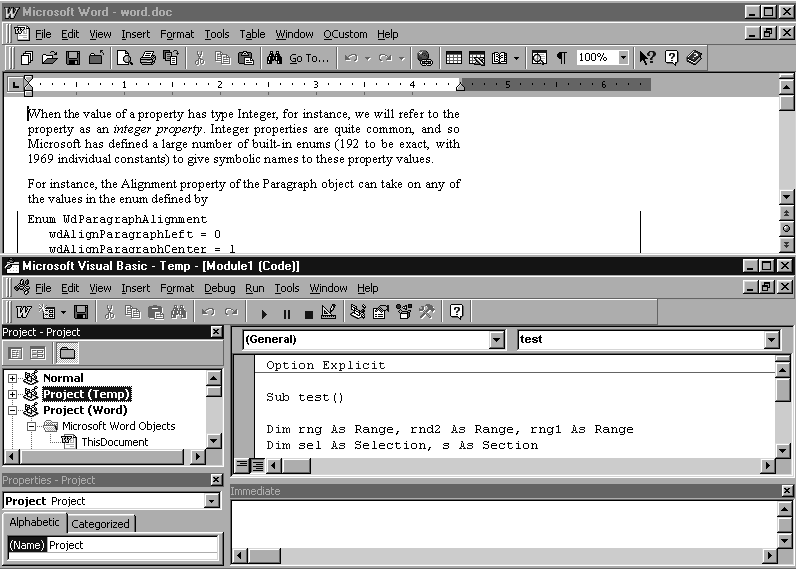Arranging Windows
If you need more space for writing code, you can close the Properties window, the Project window, and the Immediate window. On the other hand, if you are fortunate to have a large monitor, then you can split your screen as shown in Figure 3-10 in order to see the Word VBA IDE and a Word document at the same time. Then you can trace through each line of your code and watch the results in the document! (You can toggle between Word and the IDE using the Alt-F11 function key combination.)

Figure 3-10. A split-screen approach
Docking
Many of the windows in the IDE (including the Project, Properties, and Immediate windows) can be in one of two states: docked or floating. This state can be set using the Docking tab on the Options dialog box shown in Figure 3-11.
A docked window is one that is attached, or anchored, to an edge of another window or to one edge of the client area of the main VBA window. When a dockable window is moved, it snaps to an anchored position. On the other hand, a floating window can be placed anywhere on the screen.
Get Writing Word Macros, Second Edition now with the O’Reilly learning platform.
O’Reilly members experience books, live events, courses curated by job role, and more from O’Reilly and nearly 200 top publishers.

